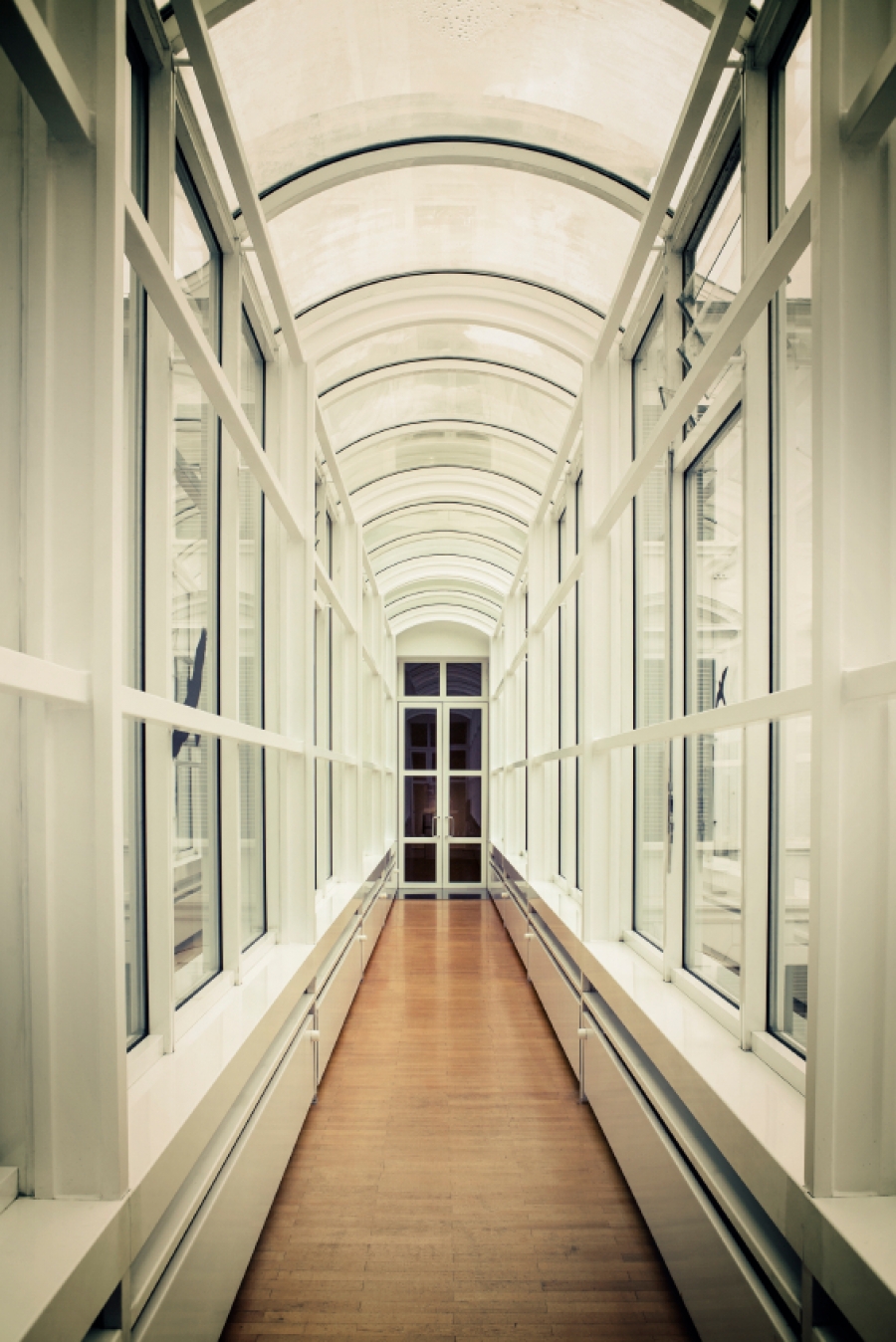CSI Project Solutions: Hotel Corridor Sound Control
Sound control and your construction project: how to use space, mass, and dampening to solve noise issues during the building of a hotel.

I was recently asked to consult on sound transmission issues and noise control by an owner of a hotel that benefits from the nearby location of an amusement park, which feeds and supports the local community. The location of the hotel and its siting on the property raised a variety of sound control issues, and this series of articles will provide solutions for each of them. In my previous article, I went over the problems of controlling noise from the outside to achieve quiet inside the hotel; this time we will focus on interior (i.e., corridor to room) issues of sound protection.
His clientele was more challenging than most. In addition to the business traveler, he would be housing families with children of many different ages and young adults who would be traveling with friends. Families with young children tend to turn in early, around 10 or 11 PM. Young adults are a different story, often not getting back to the room until 1 AM or after, and visiting is common as they wind down. Business travelers often cherish quiet time and expect to see it after 8:30 or 9 PM, so they can prepare for the next day's presentation or report. Morning comes early for the business crowd and for excited children. Young adults often consider getting up when the sun is warm, and early is not part of their focus. Some primary areas come into play in protecting individual room occupants from each other's noise, with corridors playing an important part in the sound control process.
There are certain acoustical truths when it comes to containing sound between spaces.
Three things help control sound: Space, Mass, and Damping.
The more space you put between the source of the sound and the person who could hear it, the better things are. Think about talking in a normal voice to your neighbor from across a football field. It is much harder to hear than if they are seated next to you in the same section of the stands.
Mass is a great barrier as well. Movie theaters are normally made up of walls that are 8 or 9 layers thick of gypsum board, providing enough mass to stop the loud sounds emanating from each studio from intruding on the movie playing in the next.
Damping is a technology that uses a layer of dissimilar material between two hard services. Typically a viscoelastic polymer (think tree sap) that doesn’t get hard and slows down sound waves as they pass through. For example, hold a wine glass at the base and flick it with your finger. Now, as you hear it ring, touch the top of the glass with your finger. You have created a damped glass, stopping the vibration, hence stopping the sound.
It’s not always readily apparent to the average traveler, but the hotel rooom bathroom will most often be situated right inside the door. The purpose of this is to use one of the keys to sound control listed above - Space - to protect the room's inhabitant from outside hallway sounds. The bathroom serves as a buffer between the bed and the hallway, creating a place for sound to be diffused if it does come through the hallway wall into the room. Loud sounds may pass into the bathroom and die in the empty space located there.
Dealing with Doors
Remember last time we talked about windows being a hole you have cut into your wall? Here we go again: In terms of sound control and transmission, a door is a hole in the wall that needs special attention. The door by virtue of its function has to open into the corridor, leaving a small part of the room unprotected from noise. To protect this important part of your corridor sound assembly, the area devoted to the door should be kept to a minimum and normally is. Often you may feel that you are fighting the bathroom entrance to get your things into your room. Next time remember that is by design, to help control the sound and to assure your quiet time during your hotel stay. A solid-core wood door is also important in achieving the Mass needed to thwart outside sound from reaching the room. Next, it is important that the door close and seal to the doorframe tightly. A gasket type strip will create a sound stop in the area around the door, creating a seal around the door frame that slows or stops sound from creeping in. The bottom of the door needs to be treated as well. If not, you have left a path for noise to enter the room. Notice that this particular hotel did not treat its threshold areas, and it was easy to hear people talking as they walked down the hall. Many companies make a sweep that fits the bottom of the door and prevents outside sound from pouring into the room. Otherwise, sound will pour under the bottom of the door as hotel guests walk through the halls day and night. Conversation is easily heard without this vital piece of sound protection.
Tips: Using Space, Mass, and Dampening to Control Noise
• Corridors play an important role in sound transmission in hotels and noise issues often involve the interface between individual rooms and the corridor.
• Hotel bathrooms are strategically located to act as buffers and to diffuse noise from the corridor with space.
• Hotel room doors are a weak spot in the barrier against unwanted sound transmission from the corridor to the hotel room. Door gaskets and sweeps are important parts in preventing sound transmission at this chink in the sound protection system.
My next article will explore the different types of demising walls used to protect guests who are sleeping only a few feet apart.
References: About Door Sweep Soundproofing | Acoustic Door Seals | REID Supply seal and gasket specifications (PDF)

Thad Goodman
Thad Goodman currently covers the Great Lakes and Midwest for the National Gypsum Company as a CONSTRUCTION DESIGN MANAGER. His position calls on the Architectural Community educating on Gypsum Assemblies, Product uses. He authored this article while working in the panels division of Serious Energy, manufacturer of the acoustical drywall panel QuietRock. He has professional experience as a drywall installer and finisher; has managed a joint compound manufacturing plant for Magnum in Tampa, FL; and has worked for Georgia-Pacific Gypsum in field sales and as a district manager and an architectural consultant. He is an active member of the Construction Specifications Institute (CSI), currently the Institute Director of the Great Lakes Region President.
Website: www.nationalgypsum.comLatest from Thad Goodman
- CSI Project Solutions: Drywall Delivery vs Transporting It Yourself
- CSI Project Solutions: Sound Control Options in a Warehouse
- CSI Project Solutions: Controlling the Noise Between Adjoining Hotel Rooms
- CSI Project Solutions: Gypsum on the Job? Think Permanent Heat
- CSI Project Solutions: Noise Control and Sound Transmission



